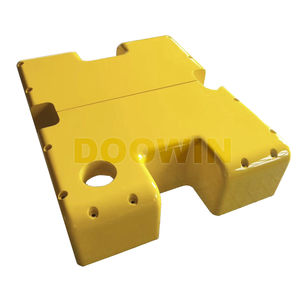
- Products
- Multipurpose buoy
- Doowin Marine
Multipurpose buoy SBM-35foamyellowwhite
Add to favorites
Compare this product
Characteristics
- Type
- multipurpose
- Material
- foam
- Color
- yellow, red, orange, white, black, blue, gray
- Other characteristics
- foam-filled
Description
The subsea solid buoyancy material (syntactic foam) is a solid compound obtained by filling an organic polymer material with an inorganic light-weight filler material through a physical and chemical reaction. The deep-sea buoyancy material is a low-density, high-strength porous structure material. It is a counterweight material for underwater operation equipment.
The subsea buoyancy module is a polymer-based solid material with low density, high strength, and low water absorption. It has the characteristics of low density (0.35~0.7g/cm3), low water absorption ( ≤2%), high mechanical strength (compressive strength 1~100MPa), corrosion resistance, and secondary mechanical processing.
The solid buoyancy modules can meet the requirements of different underwater applications. An underwater system made of high-performance solid buoyancy materials. Not only can it dive to greater depths, increase the payload, and reduce energy consumption. And it can maintain a stable working condition underwater. Deep-sea solid buoyancy materials are an indispensable part of deep diving technology in the 21st century.
Material Advantages
Low Density
The density (0.08~0.7g/cm3) is much lower than the density of water. It povides the greatest possible buoyancy per unit volume.
Low Water Absorption
Water absorption rate is not more than 3%. It provides stable buoyancy under large waer pressure.
High Mechanical Strength
The compressive strength is 1~100Mpa. The pressure resistance is excellent. It can withstand the full range of hydrostatic pressure.
Corrosion Resistance
It is resistant to deep sea water corrosion and has good weather resistance. Excellent machinning performance.
Catalogs
No catalogs are available for this product.
See all of Doowin Marine‘s catalogs*Prices are pre-tax. They exclude delivery charges and customs duties and do not include additional charges for installation or activation options. Prices are indicative only and may vary by country, with changes to the cost of raw materials and exchange rates.






